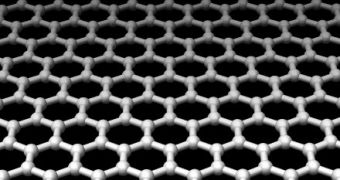Graphene has been getting mentioned in the media more and more often lately, and it looks like it is happening again, this time courtesy of the folks at MIT.
Graphene is one of the most versatile materials ever invented and it is, for the most part, seen as the next big leap in technological advancement.
Granted, this two-dimensional substance (a monolayer of carbon atoms arranged in a hexagonal lattice) is still in research stage and scientists aren't sure of everything it can do.
This isn't for lack of trying or support though, since it wasn't long ago that the research efforts got £50 million ($77.69 / 57.82 Euro) in funding.
As if superfast Internet connections, transistors, touchscreens, mobile phones and even lighter aircraft wings weren't enough, it turns out that there are even more things that graphene can be used for.
According to researchers from MIT, it can be employed in the creation of new camera sensors, but its ability to serve as photodetector extends much farther than that
When a material is discovered to be able to detect and absorb light, it becomes a potential solution in everything up to collecting solar energy.
Granted, it is unclear if graphene is efficient enough at collecting energy for this prospect to be seriously considered.
However, the fact remains that the ability to serve as a photodetector, over what was named “a very wide energy range,” adds other possibilities to the list, especially since it seems to work particularly well in the infrared spectrum.
Advanced detectors for astronomical telescopes, better nightvision systems and everything in between were given as possible, even likely, graphene implementations.
“This is the absolute infancy of graphene photodetectors,” said Pablo Jarillo-Herrero, an assistant professor of physics at MIT and senior author of the new paper published in the journal Science. “There are many factors that could make it better or faster.”

 14 DAY TRIAL //
14 DAY TRIAL //